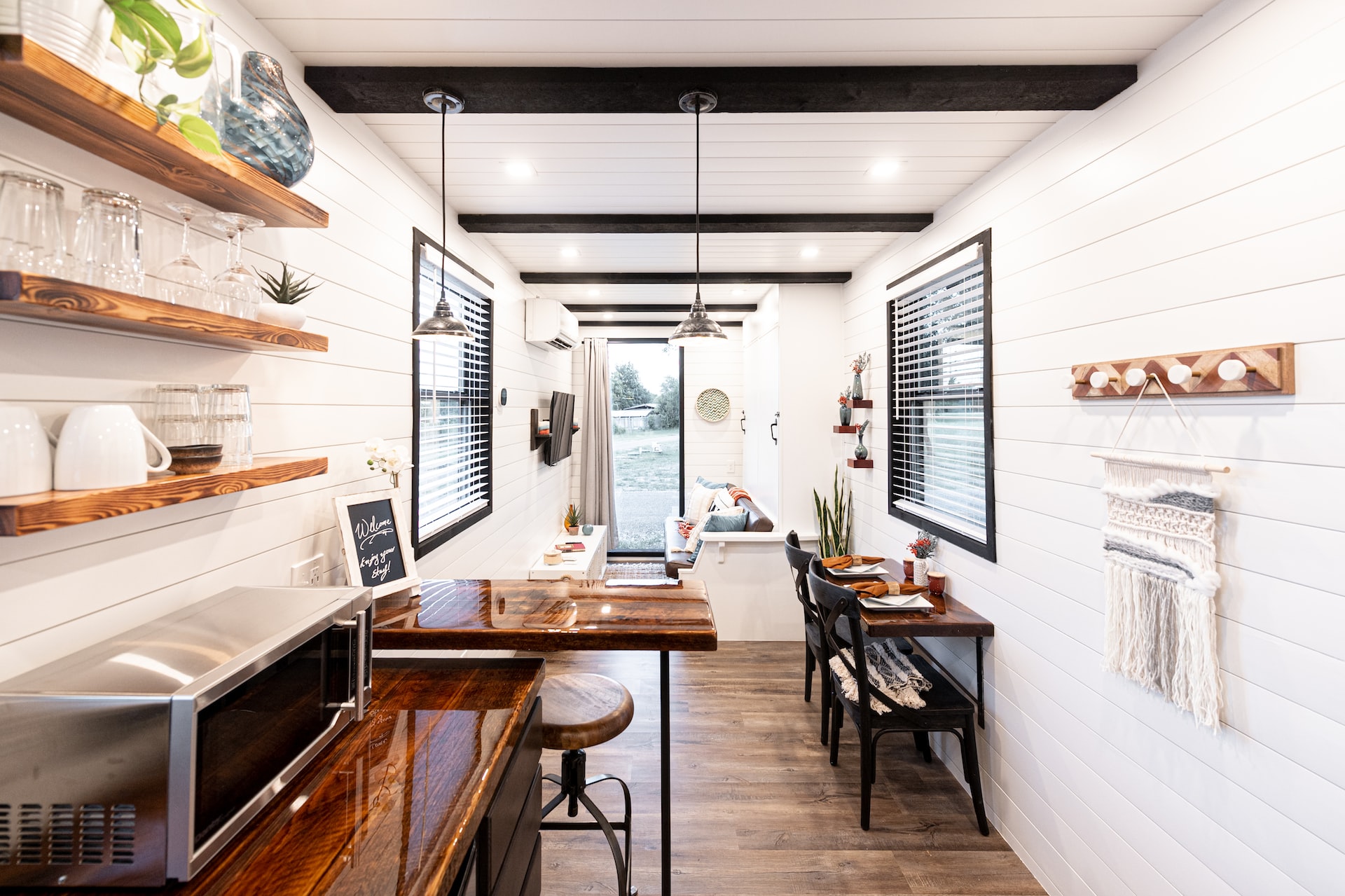As the tiny house movement grows in popularity, more and more people are choosing to downsize and live in these compact and sustainable mobile homes. However, one question often arises how these tiny structures are anchored and secured to the ground? This article will explore the different anchoring methods used for tiny homes and their benefits and drawbacks.
1. Foundation
The type of foundation used for a tiny home will determine the anchoring method needed. Some tiny homes are built on permanent foundations, including a full basement or a slab foundation. In such cases, the home is anchored to the foundation using bolts or screws, similar to traditional homes.
2. Skids
Skids are a popular foundation option for tiny homes on wheels. These long beams run the home’s length and sit on the trailer bed. The home is then anchored to the skids using bolts or screws.
2.1 Advantages of skids
Skids allow for easy transportation of a tiny home. The skids act as a base, so the home can be lifted and moved to a new location without removing the anchors.
2.2 Drawbacks of skids
The primary drawback of skids is that they do not provide as much stability as a permanent foundation. If the tiny home is not adequately anchored to the skids, it can shift or move during transport, which can cause damage to the structure or the components of the structure such as the septic system, and plumbing lines of the structure.
3. Ground anchors
Ground anchors are another popular anchoring method for tiny homes on wheels. These are typically made of steel or iron and are driven into the ground using a unique tool. The home is then attached to the ground anchors using steel cables or chains.
3.1 Advantages of ground anchors
Ground anchors provide a stable and secure anchoring method. They are also relatively easy to install and can be removed if the tiny home needs to be relocated.
3.2 Drawbacks of ground anchors
The primary issue with ground anchors is that they require a level surface for installation. If the ground is uneven or rocky, installing the anchors properly may be difficult or impossible. Besides, ground anchors can be expensive and may require professional installation.
4. Concrete blocks
Concrete blocks are another option for anchoring tiny homes. These large blocks of concrete are placed under the corners of the home and anchored using bolts or screws.
4.1 Advantages of concrete blocks
Concrete blocks give a stable foundation for a tiny home. They are also relatively easy to install and can be removed if necessary.
4.2 Drawbacks of concrete blocks
Concrete blocks can be heavy and difficult to move. And they may not be suitable for all soil or ground conditions.
5. Screw anchors
Screw anchors, also known as helical anchors, are ground anchors that are screwed into the ground using a particular machine. The home is then attached to the screw anchors using steel cables or chains.
5.1 Advantages of screw anchors
Screw anchors provide a strong and stable anchoring method. They are also relatively easy to install and can be removed if necessary.
5.2 Drawbacks of screw anchors
Screw anchors may not be suitable for all soil or ground conditions. And they can be expensive and may require professional installation.
Here is a Helpful Video on How to Anchor Down a Tiny House:
Conclusion
Several anchoring methods are used for tiny homes, each with advantages and drawbacks. The type of foundation used for the tiny home will determine the best anchoring method. Some popular anchoring methods include skids, ground anchors, concrete blocks, and screw anchors.
When choosing an anchoring method for a tiny home, it is essential to consider factors such as the soil and ground conditions, the weight of the home, and the level of mobility required. It is also beneficial to consult a professional to install the anchoring method correctly and securely.
Frequently Asked Questions
Do all tiny homes need to be anchored?
Yes, all tiny homes must be anchored to ensure stability and safety.
Can I install the anchoring system myself?
Installing some anchoring systems yourself is possible, but consulting with a professional is recommended to ensure the installation is done correctly.
Can I move my tiny home if it is anchored?
Yes, some anchoring systems, such as skids, allow for easy transportation of the tiny home.
How do I know which anchoring method to use for my tiny home?
The best anchoring method will depend on the type of foundation used for the tiny home and the specific ground conditions of the location.
What is the average cost of anchoring a tiny home?
The cost of anchoring a tiny home can vary depending on the type of anchoring system used and the specific installation requirements.
How often do I need to check my anchoring system?
It is recommended to check your anchoring system regularly, especially after extreme weather conditions or if the tiny home has been moved to a new location.
